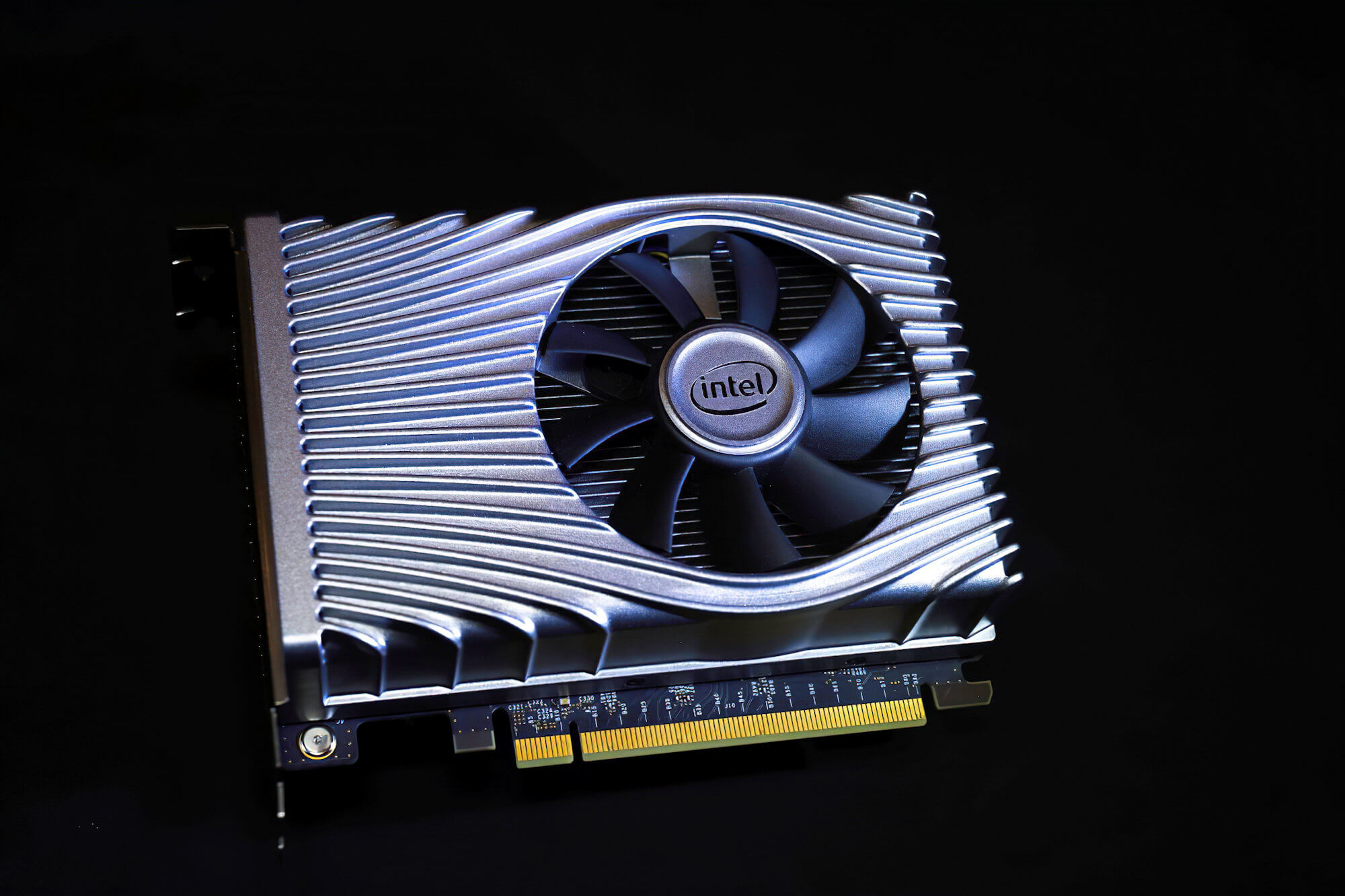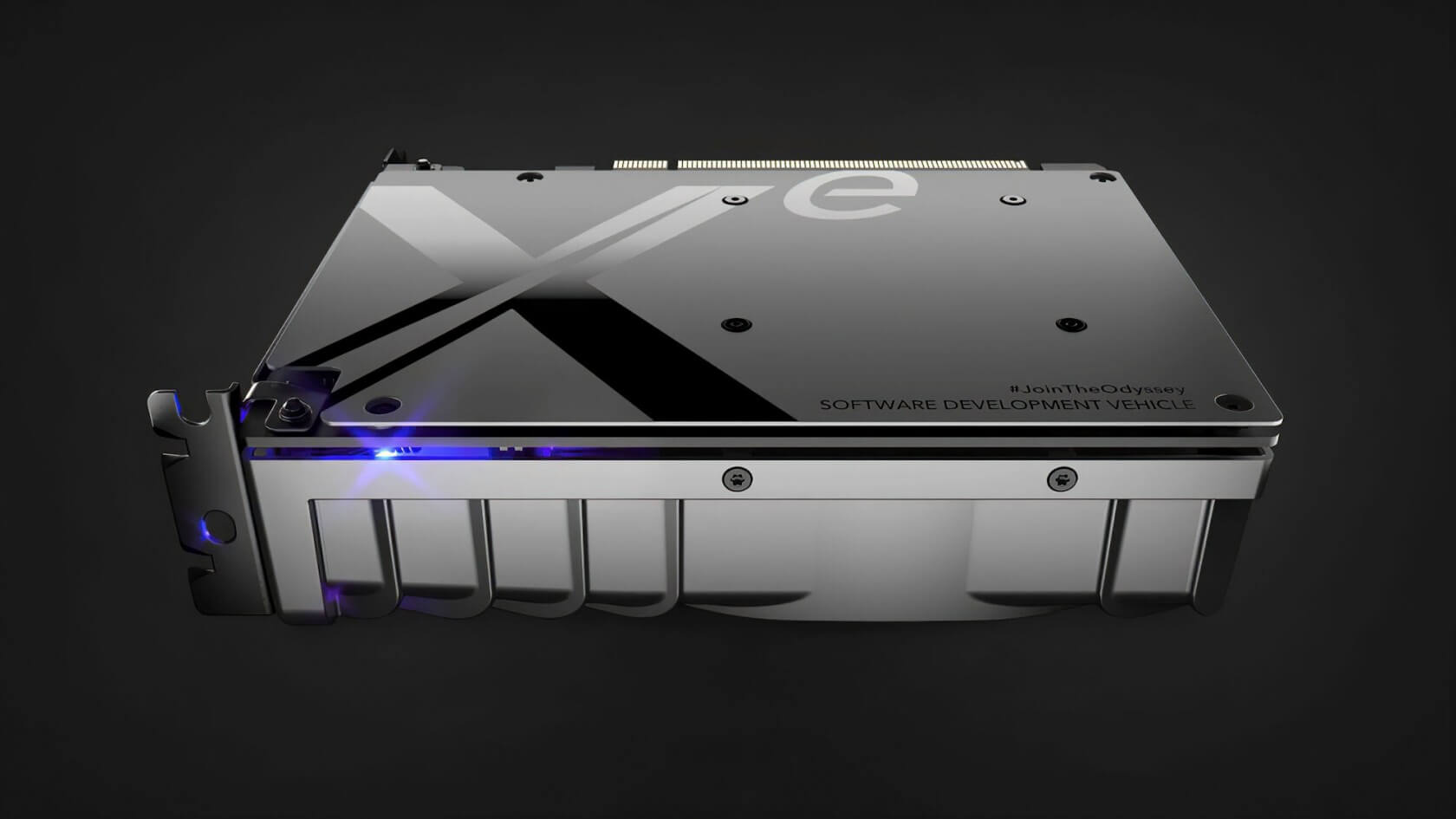In a nutshell: Intel has revealed its first gaming GPU in twenty years, the DG1 SDV (software development vehicle). Despite the wicked RGB-infused design, this model is for developers only, but it proves that Intel is closing in on its goal of challenging Nvidia and AMD’s GPU supremacy.

Intel is keeping its cards close to its chest, so unless you’re a serious developer, you probably won’t hear about specs or performance from official sources for a while. But who needs official sources?
A fortnight ago, serial leaker Komachi found the card referenced in the Eurasian Economic Commission database, where it’s listed as having 96 execution units. Each of Intel’s execution units contains eight cores, so the card most likely has 768 cores.
There’s a subtle hint in the fact that the DG1 doesn’t have a power connector, meaning it’s limited to the 75W connection motherboards provide through PCIe slots. It does have a fan, though, so assuming that’s not just for aesthetics, it can probably make use of the full 75W. It’s also likely to be built on 10nm or 10nm+.

While it’s not exactly the most powerful of GPUs, there’s room in the market for it. Intel’s live demos at CES have been… less than exemplary, but that’s probably due to the card’s pre-release status. Assuming the public release version can run at reasonable clock speeds on optimized software, it should perform like the GeForce GTX 1650.
However, if that’s not enough for you, there’s always the DG2. Intel accidentally confirmed three prototype models, with 1024, 2048 and 4096 cores, which should challenge Nvidia in the high-end. They’re probably further down the track, though. The DG1 and DG2 will both appear in laptops, too.
The DG1, on the other hand, seems pretty close to release. Last year, Intel executive Raja Koduri hinted that the first Xe products could start to arrive in June 2020. This little peek into the development process Intel has given us only reinforces the likelihood of that schedule.
https://www.techspot.com/news/83485-intel-first-xe-gaming-gpu-shipping-developers.html